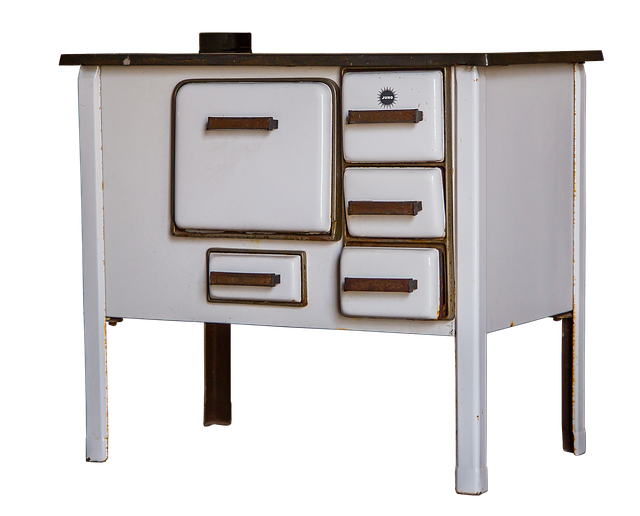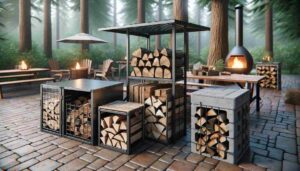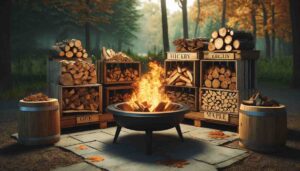Wood stoves have been a reliable source of heat and comfort for centuries, providing warmth and ambiance to countless homes around the world. Whether you’re looking to reduce your heating bills, lower your carbon footprint, or simply enjoy the cozy crackling of a fire, a wood stove can be a fantastic addition to your home. In this article, we’ll delve into wood stove information, exploring the various types of wood stoves, their benefits, safety considerations, and how outdoor wood furnaces fit into the mix. By the end of this article, you’ll be well-equipped with the knowledge you need to make an informed decision about wood stoves and log burners.
Types of Wood Stoves
a. Traditional Wood Stoves:
Traditional wood stoves, often referred to as “log burners,” are the classic and most common type of wood-burning stoves. They come in various sizes and styles, but they all share the same basic principle: they burn firewood to generate heat. These stoves are typically made of cast iron or steel and have a firebox where you load wood and a chimney to release smoke and exhaust gases.
b. Pellet Stoves:
Pellet stoves are a modern alternative to traditional wood stoves. They use compressed wood pellets made from sawdust or other biomass materials as fuel. Pellet stoves are highly efficient and can be automated, with programmable thermostats and automatic pellet feeders. They produce less ash and emissions compared to log burners, making them a cleaner-burning option.
c. Catalytic vs. Non-Catalytic Stoves:
Within the category of traditional wood stoves, there are two primary subtypes: catalytic and non-catalytic stoves.
- Catalytic Stoves: These stoves use a catalytic combustor to lower combustion temperatures and improve efficiency. They achieve this by converting creosote and other pollutants into less harmful substances. Catalytic stoves tend to burn more efficiently and produce less creosote buildup in the chimney. However, they require regular maintenance of the catalytic combustor.
- Non-Catalytic Stoves: Non-catalytic stoves rely on a secondary combustion system to burn off excess smoke and gases. While they may require less maintenance than catalytic stoves, they tend to be less efficient and produce more emissions.
d. Masonry Stoves:
Masonry stoves are known for their impressive thermal mass. These stoves are typically constructed from bricks, tiles, or stone and can store a substantial amount of heat. They release heat gradually, providing a long-lasting warmth even after the fire has burned out. Masonry stoves are renowned for their efficiency and ability to heat large spaces effectively.
e. Outdoor Wood Furnaces:
Outdoor wood furnaces, also known as outdoor boilers or hydronic heaters, are a distinct type of wood-burning appliance designed to heat water. This heated water is then circulated through insulated pipes into a building’s heating system, radiators, or floor heating system. These units are usually located outdoors and require a dedicated space for the wood fuel and boiler.
Benefits of Using Wood Stoves
a. Cost-Efficiency:
One of the primary reasons people opt for wood stoves is the potential for cost savings. Firewood is often less expensive than other heating fuels like natural gas or electricity. By relying on wood as a heat source, homeowners can reduce their heating bills significantly, especially if they have access to free or low-cost firewood.
b. Environmental Benefits:
Wood stoves are considered a more environmentally friendly heating option when compared to fossil fuels. Burning wood releases carbon dioxide, but it is considered carbon-neutral because the carbon emitted during combustion is offset by the carbon absorbed by trees during their growth. Additionally, using sustainably sourced firewood and modern, efficient stoves can minimize emissions and air pollution.
c. Independence from Utility Companies:
Wood stoves provide a degree of self-sufficiency. When you have a wood stove, you’re less reliant on utility companies for heating, which can be especially beneficial during power outages or in rural areas where utility services may be less reliable.
d. Aesthetic Appeal:
Wood stoves add charm and character to any room. They create a cozy and inviting atmosphere with their warm glow and comforting crackling sound. Many homeowners appreciate the ambiance and aesthetic value that wood stoves bring to their living spaces.
e. Backup Heating:
Wood stoves can serve as an excellent backup heating source. In case of a heating system failure or emergency, a wood stove can keep your home warm and safe. This backup option provides peace of mind, particularly in cold climates.
Safety Considerations
a. Installation:
Proper installation is crucial for the safety and efficiency of a wood stove. It’s advisable to have a certified professional install your stove, as they can ensure it complies with local building codes and safety standards. Key installation considerations include:
- Choosing an appropriate location with proper clearance from combustible materials.
- Using the correct type and size of chimney or vent pipe.
- Ensuring a stable and non-combustible base or hearth for the stove.
- Properly sealing all joints and connections to prevent leaks.
b. Chimney Maintenance:
Regular chimney maintenance is essential to prevent chimney fires and ensure efficient stove operation. Key maintenance tasks include:
- Annual chimney inspections to check for creosote buildup, blockages, and structural issues.
- Periodic cleaning to remove creosote and soot buildup. The frequency of cleaning depends on usage and wood quality.
- Installing spark arrestors and chimney caps to prevent sparks and debris from escaping the chimney.
c. Fire Safety:
Wood stoves can pose fire hazards if not used correctly. To ensure fire safety, follow these guidelines:
- Use seasoned firewood with low moisture content to reduce creosote buildup and improve combustion.
- Never overload the stove with wood; follow manufacturer recommendations for fuel load.
- Use a fire screen or glass door to prevent embers from escaping the stove.
- Keep flammable materials, such as curtains and furniture, at a safe distance from the stove.
- Install smoke detectors and carbon monoxide detectors in your home and regularly test them.
d. Proper Wood Selection and Storage:
Using the right type of wood and storing it properly is essential for safe and efficient wood stove operation. Choose hardwoods like oak, maple, or cherry, which burn cleaner and longer than softwoods. Ensure your firewood is properly seasoned (dried) with a moisture content of around 20% or less to prevent excessive creosote buildup and emissions. Store firewood in a dry, well-ventilated area to maintain its quality.
Maintenance and Care
a. Cleaning and Maintenance:
Regular cleaning and maintenance are essential to keep your wood stove operating at its best. Here are some maintenance tasks to perform:
- Clean the stove’s glass window regularly to maintain visibility and aesthetics.
- Empty the ash pan when necessary, but leave a small layer of ash for insulation.
- Inspect gaskets, door seals, and other components for wear and replace them as needed.
- Lubricate hinges and handles to ensure smooth operation.
- Check for cracks, rust, or other damage and address any issues promptly.
b. Troubleshooting Common Issues:
Wood stoves may encounter common issues over time. Here are some troubleshooting tips for addressing these problems:
- If the stove doesn’t draft properly, check for blockages in the chimney or flue.
- If you experience excessive smoke, ensure you’re using dry, seasoned wood and maintaining proper airflow.
- If the stove doesn’t produce enough heat, verify that the damper and air controls are adjusted correctly.
- If the glass becomes excessively sooty, adjust the air controls to achieve a cleaner burn.
c. Seasonal Preparation:
Before the heating season begins, it’s important to prepare your wood stove and chimney:
- Have the chimney cleaned and inspected by a professional.
- Check for any signs of wear or damage on the stove and address them.
- Stock up on dry, seasoned firewood to ensure a steady supply during the winter months.
- Verify that all safety devices, such as smoke detectors and carbon monoxide detectors, are working properly.
Outdoor Wood Furnaces: A Closer Look
a. How Outdoor Wood Furnaces Work:
Outdoor wood furnaces are a unique heating solution that involves burning wood in an outdoor unit to heat water. The heated water is then circulated through insulated pipes into the building to provide heat. These units can also be used to heat hot tubs, swimming pools, and domestic hot water.
b. Pros and Cons:
Pros of outdoor wood furnaces include:
- High heating efficiency and reduced heating costs.
- Remote placement, reducing indoor air quality concerns and fire risks.
- Versatility in heating various applications.
Cons and considerations include:
- Initial setup and installation costs.
- Fuel storage and management requirements.
- Potential environmental impact and emissions.
- Noise generated by the blower and circulation pump.
c. Installation and Maintenance:
Proper installation of an outdoor wood furnace is crucial for safety and efficiency. Considerations include:
- Siting the furnace at a safe distance from the home and other structures.
- Insulating and burying the supply and return pipes to prevent heat loss.
- Properly sizing the furnace to meet the heating demands of your home.
- Regular maintenance of the unit, including cleaning and inspection of components.
d. Environmental Considerations:
While outdoor wood furnaces can be efficient, they can also emit particulate matter and pollutants if not operated correctly. To minimize environmental impact:
- Choose a high-efficiency model with low emissions.
- Use dry, seasoned wood to reduce smoke and emissions.
- Consider alternative heating options, such as pellet boilers or modern wood stoves, if emissions are a concern.
Conclusion
Wood stoves, log burners, and outdoor wood furnaces offer homeowners a range of heating options to suit their needs, preferences, and budgets. When choosing a wood-burning appliance, it’s essential to consider factors such as fuel type, efficiency, safety, and environmental impact. Proper installation, maintenance, and responsible wood selection and storage are key to enjoying the benefits of wood heating while minimizing risks and emissions.
Whether you opt for a traditional wood stove, a modern pellet stove, or an outdoor wood furnace, the cozy warmth and ambiance they provide can make your home a more comfortable and inviting place to be. With the knowledge gained from this guide, you’ll be well-prepared to select, install, and maintain the wood-burning appliance that best suits your needs and preferences.










